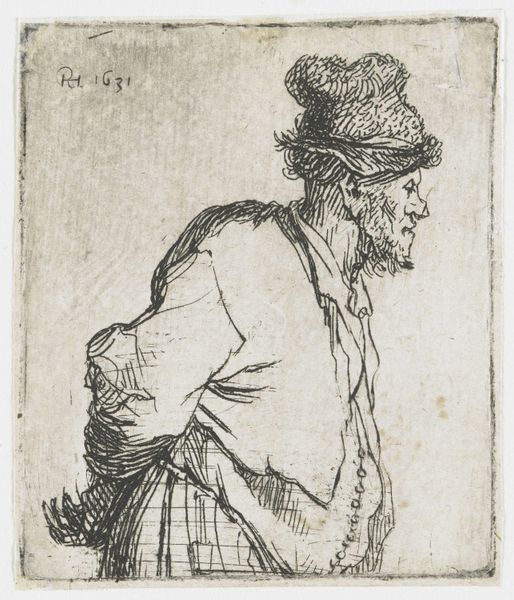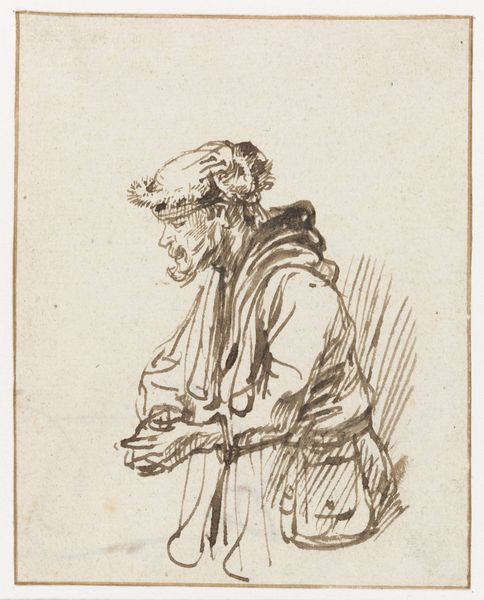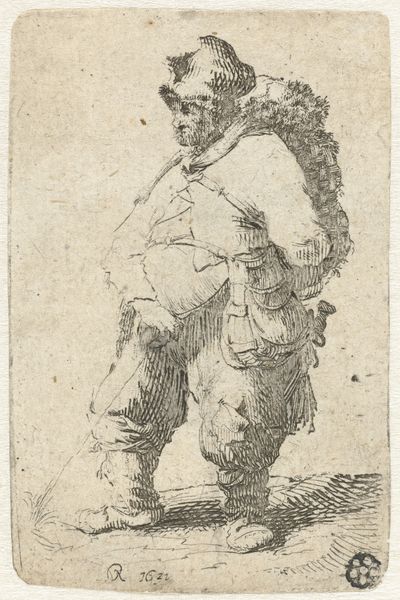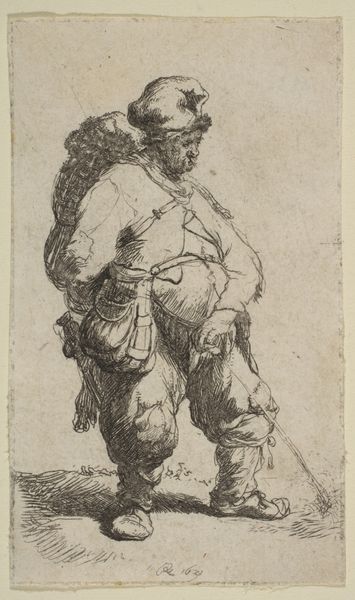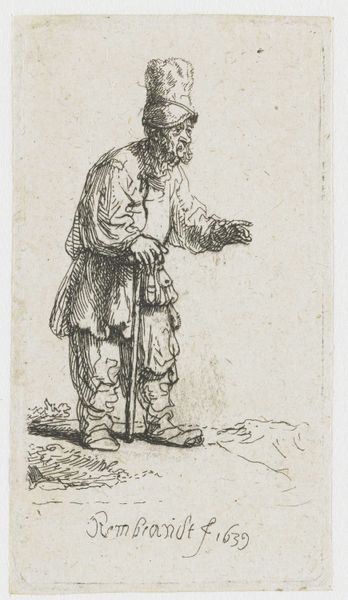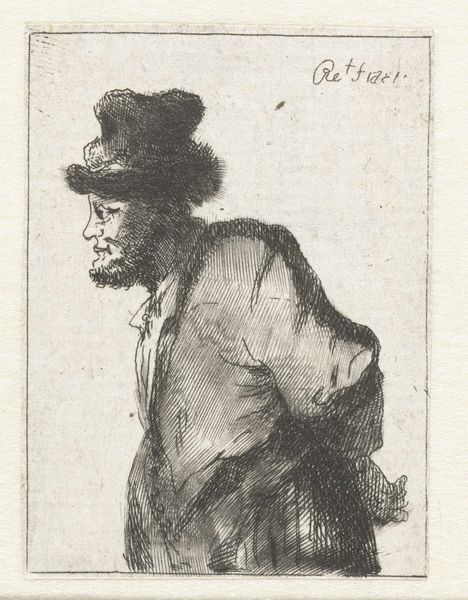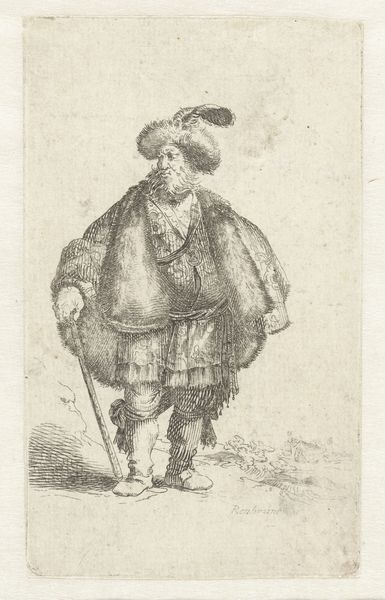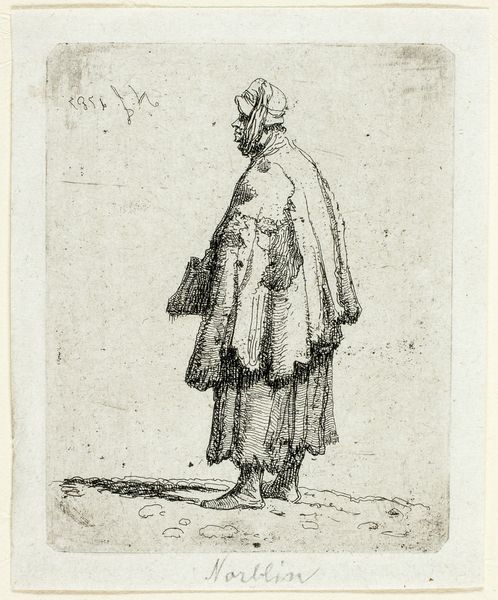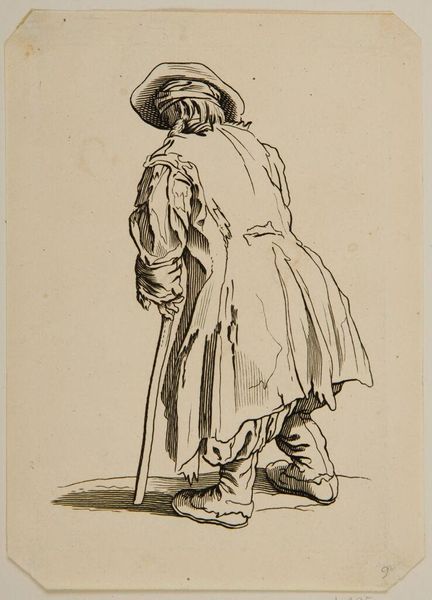
drawing, print, etching, paper, ink
#
portrait
#
drawing
#
baroque
#
dutch-golden-age
# print
#
etching
#
figuration
#
paper
#
ink
Dimensions: 60 × 50 mm (plate); 65 × 54 mm (sheet)
Copyright: Public Domain
Curator: Here we have Rembrandt van Rijn’s etching from 1629, "Peasant with His Hands Behind His Back," currently residing here at the Art Institute of Chicago. What’s grabbing you about this, as you gaze upon our pensive peasant? Editor: There’s such a sense of... contained weariness. The lines are delicate but somehow heavy, like the weight of daily life etched into the paper itself. Curator: Indeed! As an iconographer, how do you see his posture speaking to a broader narrative? Is it just simple weariness, or is there something more? Editor: It's his hands behind his back that intrigue me. Traditionally, that pose suggests restraint, possibly powerlessness. The figure almost appears trapped by circumstance or perhaps societal norms, resigned to something. His elaborate cap also reads of someone of standing that had been perhaps disgraced and made to feel insignificant? Curator: Interesting observation! And Rembrandt does play with those contrasts, doesn’t he? This isn’t a grand portrait, commissioned by nobility. It’s an intimate portrayal of a common man elevated through artistic skill and observation, with the etching allowing production on a wider scale. A very modern concept if you ask me, he created an Instagram version that went on to be consumed around the globe in the early 17th century. Editor: The choice of etching itself contributes to this democratization. Unlike painting, which requires considerable resources, etching is comparatively accessible and allows artists to explore a rawness of style that connects with the masses. Also I'd be remiss not to state how powerfully moving the eyes appear in the image, like all of his sitters he conveys great empathy in them. Curator: The intricacy of the linework – particularly in rendering his facial features and textured cap–is fantastic; they invite intense study. I think it reflects Rembrandt's desire to dignify the ordinary, seeing worth where society often looks away. Editor: It’s a beautiful demonstration of how symbols can both empower and confine, carrying layered cultural weight that transcends centuries. Also can be considered as a reminder to engage empathetically. Curator: A wonderful and nuanced take on how societal structures weigh upon individuals, masterfully translated by Rembrandt in a way that makes you pause and truly consider those living on the margins. Editor: A tiny window into another time, with implications echoing right into our present.
Comments
No comments
Be the first to comment and join the conversation on the ultimate creative platform.
